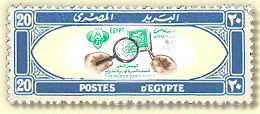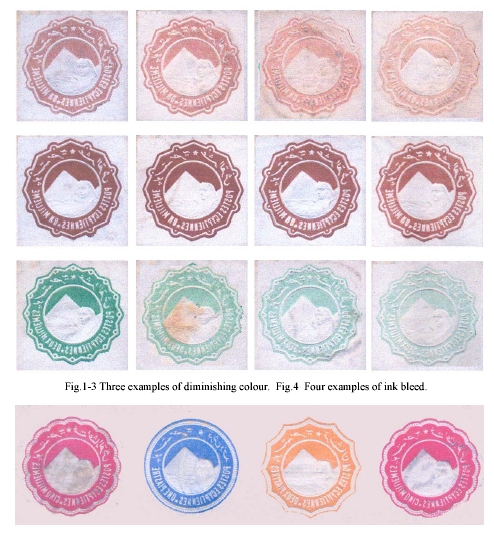

| Q14 April, 2006 member 543 Postal stationery query I have recently found this 2-millièmes postal stationery envelope of 1889(Smith E-6, Nile Post SEN5)with normal watermark. It is cancelled HILWAN 3 IV 05 TIII, but it is not addressed. It is clear that the green Sphinx and Pyramids value vignette stamps also printed in mirror image inside the cover precisely on the reverse of the vignette outside. I think it is probably an accidental variety. I have not found any mention of this kind of variety in the Smith or Nile Post books. Is it known and reported elsewhere? Or on other envelopes? I imagine that the envelopes were printed in sheets, then cut out to make individual formes, then folded and pasted to produce the completed envelope. Can anyone tell me how many envelopes were made with one sheet? |
 |
| R1 November 8, 2006 member 165
The type of variety as shown in the query is not uncommon on the embossed envelopes of the De La Rue period of postal stationery. It must be remembered that these early printing machines were all hand fed: in consequence, any distraction to the operator feeding the sheets, the "layer on", might easily lead to a missed revolution of the printing cylinder, leaving an impression on the printing cylinder rather than on the postal stationery sheet. If this occurred for a number of revolutions the intensity of the ink would accumulate. The first sheet to be fed into the cylinder thereafter would result in a normal printing, but in addition the impression on the cylinder itself would also be transferred to the reverse side of the sheet, meaning a negative impression which on successive sheets of paper would receive the same impressions but with a diminishing quantity of ink, thus appearing weaker until it gradually disappeared (see Figures 1 to 3 demonstrating my explanation). In the case of the one piastre blue envelopes, however, the explanation is different: here the image appearing on the reverse (interior) is caused by ink absorption due to the porosity of the paper used (ink bleed: Fig. 4). 
|
|
|